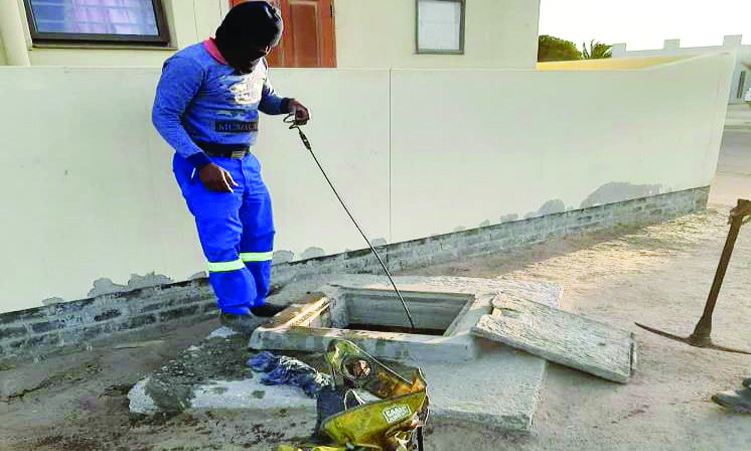Resident of Walvis Bay’s Kuisebmond area have voiced their frustration with persistent sewage issues plaguing the community, accusing the local municipality of years of neglect.
For too long, they say, they have had to contend with sewage flooding their showers and baths, toilets overflowing, and blocked drains causing sewage to run through yards and in streets.
This poses health risks, they say.
“It’s every year. The dirty water is coming through the house and flowing into the street. The kids are playing with the water.” Fransina Lukas says.
“This whole road is flooded. This is sewage water from the houses in this street. The people here can do nothing but carry buckets and throw the water here,” she says.
“We are tired. We are done with the municipality, and it’s the same story every year.”
Henschell Kandjeo says the failure to address the problem highlights a deep-seated issue tied to governance and maintenance.
“This is the sentence of 30 years of independence, and we must be proud of who we are. We are living in toilets while you’re sleeping.
“And then the municipality will tell you the colonial era sewerage system is failing them. After 30 years! So when are you going to develop your own independent system?” he asks.
Gerhard Tjinotjiwa highlights the irony of paying for non-existent services: “We have to pay our municipal bills, but this is the service we’re getting.”
Walvis Bay spokesperson Anita Kahiva has explained the department of water, waste and environmental management’s role in handling sewage-related operations.
She says the root causes of the issue are residents dumping solid objects into the sewer lines, illegal connections, and the theft of manhole covers.
The municipality is taking steps to educate the public, impose fines and secure manholes to prevent further issues.
“The solution and measures adopted by the municipality to address the current sewerage problems will only be a success if residents cooperate,” Kahiva says.
She urges residents to refrain from abusing the sewerage system.
When responding to clients’ calls, the department will immediately inspect the wastewater level in both upstream and downstream manholes to determine if the flow of sewage is caused by a blockage in the main network line.
Kahiva says the municipal council has made provision in the current financial year capital budget to upgrade and rehabilitate some sewer pump stations and remove midblock sewer systems.
Key projects include the upgrading of the Kuisebmond main pump station and the rerouting of sewer lines in Sandwich, Mars and Mautamanene Streets, which began in 2023.
“The primary mitigation method the department uses is containment, and subsequently, the recovery of sewage that has been discharged,” she says.
This involves establishing physical barriers to prevent the further spread of wastewater and using cleaning equipment for removal, Kahiva says.
Additionally, flow diversion and the relief of affected areas by removing blockages are standard mitigation practices, she says.
Stay informed with The Namibian – your source for credible journalism. Get in-depth reporting and opinions for
only N$85 a month. Invest in journalism, invest in democracy –
Subscribe Now!






